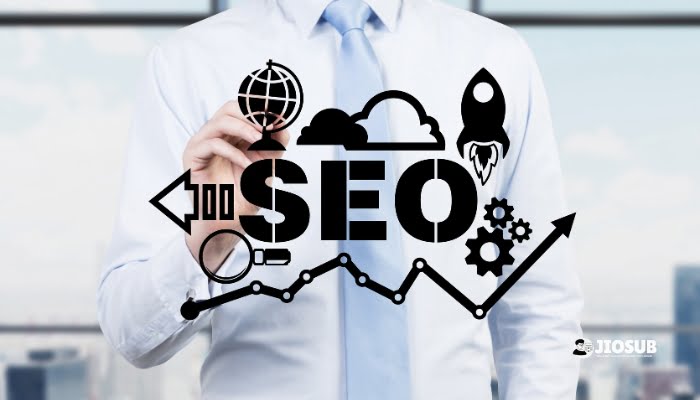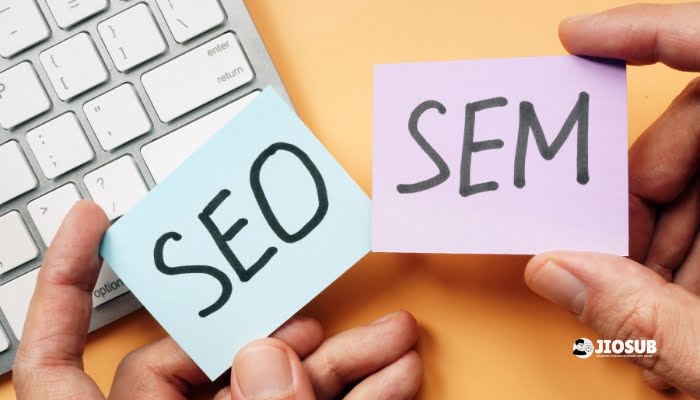In the digital marketing realm, two terms often thrown around are SEO and SEM. While they sound similar and share common goals, they operate differently and serve distinct purposes. Understanding the disparities between SEO (Search Engine Optimization) and SEM (Search Engine Marketing) is crucial for devising an effective online marketing strategy.
What is SEO?

Definition
SEO encompasses strategies and techniques aimed at optimizing a website to rank higher in organic search engine results. It involves optimizing website content, improving site speed, building quality backlinks, and enhancing user experience to increase visibility and attract relevant organic traffic.
Importance
SEO is integral to long-term online success as it helps websites achieve sustainable visibility and credibility on search engines like Google, Bing, and Yahoo. By ranking highly organically, businesses can attract targeted traffic without directly paying for each click.
How it works
Search engines use complex algorithms to determine the relevance and authority of web pages for specific search queries. SEO involves aligning website content and structure with these algorithms to enhance visibility for relevant keywords and phrases.
What is SEM?

Definition
SEM refers to the practice of promoting websites by increasing their visibility in search engine results pages (SERPs) through paid advertising. It involves bidding on keywords relevant to your target audience and paying for ads to appear above or alongside organic search results.
Importance
SEM provides immediate visibility and can drive targeted traffic to a website quickly. It allows businesses to reach potential customers at the precise moment they are searching for products or services, making it highly effective for generating leads and conversions.
How it works
SEM platforms like Google Ads operate on a pay-per-click (PPC) model, where advertisers bid on keywords and pay each time their ad is clicked. Ad placement is determined by a combination of bid amount and ad quality score, which evaluates factors like relevance and user experience.
Also Read: The Role of AI in Modern SEO: What You Need to Know
Key Differences Between SEO and SEM

Cost
SEO is typically a long-term investment that requires time and resources to implement but offers sustainable results without ongoing costs. SEM, on the other hand, involves immediate costs for each click and requires ongoing investment to maintain visibility.
Timeframe for Results
SEO requires patience as it may take several months to see significant improvements in search rankings and organic traffic. SEM, on the contrary, delivers immediate results, with ads appearing as soon as the campaign is launched.
Clicks vs. Organic Traffic
SEM drives traffic through paid advertisements, with costs incurred for each click received. SEO focuses on attracting organic traffic through unpaid search results, with no direct cost per click.
Control over Placement
With SEM, advertisers have control over where and when their ads appear, allowing for precise targeting and customization. SEO relies on search engine algorithms to determine placement, with less control over rankings and visibility.
Long-term vs. Short-term Strategy
SEO is a long-term strategy that builds sustainable visibility and credibility over time. SEM is more suited for short-term goals and immediate results, making it ideal for promotions, product launches, and seasonal campaigns.
Also Read: Top 10 SEO Trends to Watch in 2024
Which One Should You Use?
Choosing between SEO and SEM depends on various factors, including your business goals, budget, timeline, and competition. While SEO lays the foundation for long-term success and organic growth, SEM offers immediate visibility and control over ad placement.
Consider integrating both strategies for a comprehensive online marketing approach, leveraging the strengths of each to maximize results and reach your target audience effectively.
Conclusion
In conclusion, SEO and SEM are both valuable tools in the digital marketing toolkit, each serving distinct purposes and offering unique advantages. Understanding the differences between the two is essential for devising a strategic marketing plan that aligns with your business objectives and maximizes your online presence.
FAQs
What is the main goal of SEO?
The main goal of SEO is to improve a website’s visibility and ranking in organic search engine results, thereby attracting relevant organic traffic and increasing online credibility.
How does SEM impact search engine rankings?
SEM does not directly impact organic search engine rankings. While it can increase website visibility through paid ads, organic rankings are determined by SEO efforts and search engine algorithms.
Can SEO and SEM be used together?
Yes, SEO and SEM can complement each other effectively. Integrating both strategies allows businesses to maximize their online presence, combining long-term organic growth with immediate paid visibility.
How long does it take to see results from SEO?
SEO results vary depending on various factors, such as website age, competition, and the effectiveness of optimization efforts. Generally, it may take several months to see significant improvements in search rankings and organic traffic.
Is SEM more effective than SEO?
The effectiveness of SEM versus SEO depends on factors such as budget, goals, and competition. While SEM offers immediate visibility and control over ad placement, SEO provides long-term sustainability and credibility in organic search results. Both can be effective when used strategically in conjunction with each other.
Also Read: How to Optimize Your Website for Voice Search in 2024

